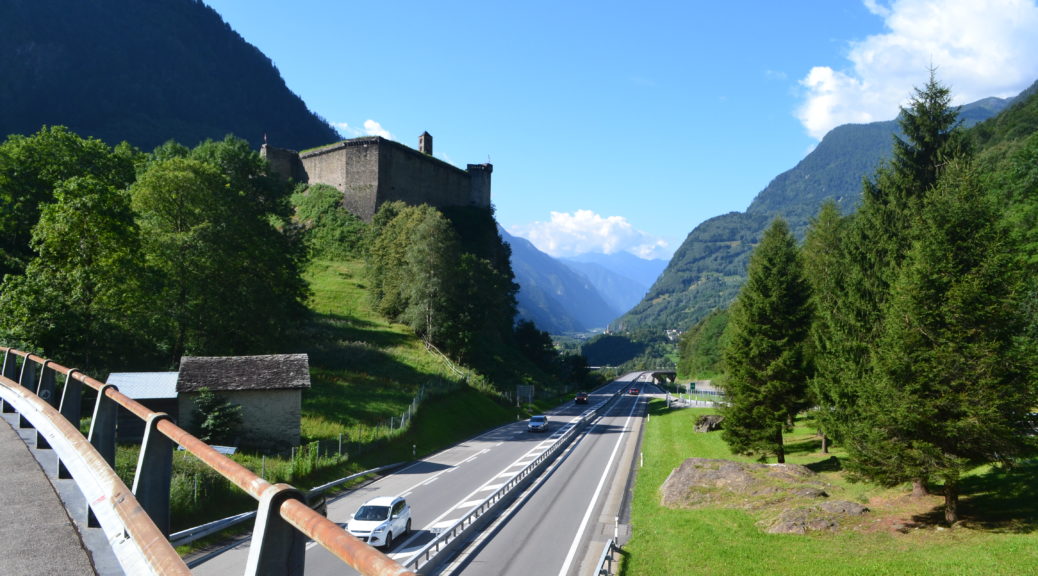
Tips for Taking a Road Trip in Europe
I love road trips, both to watch the landscape change along the way and to have access to off-the-beaten-path locations, including following a tempting sign blindly and seeing where it takes you.
READ MORE: 9 Reasons Why a Road Trip is the Best Way to See Oman
Past experiences on a road trip in Europe have taken me unexpectedly to giant castle complexes and fantastic wineries, and it’s those types of surprises that make it such a satisfying way to travel.
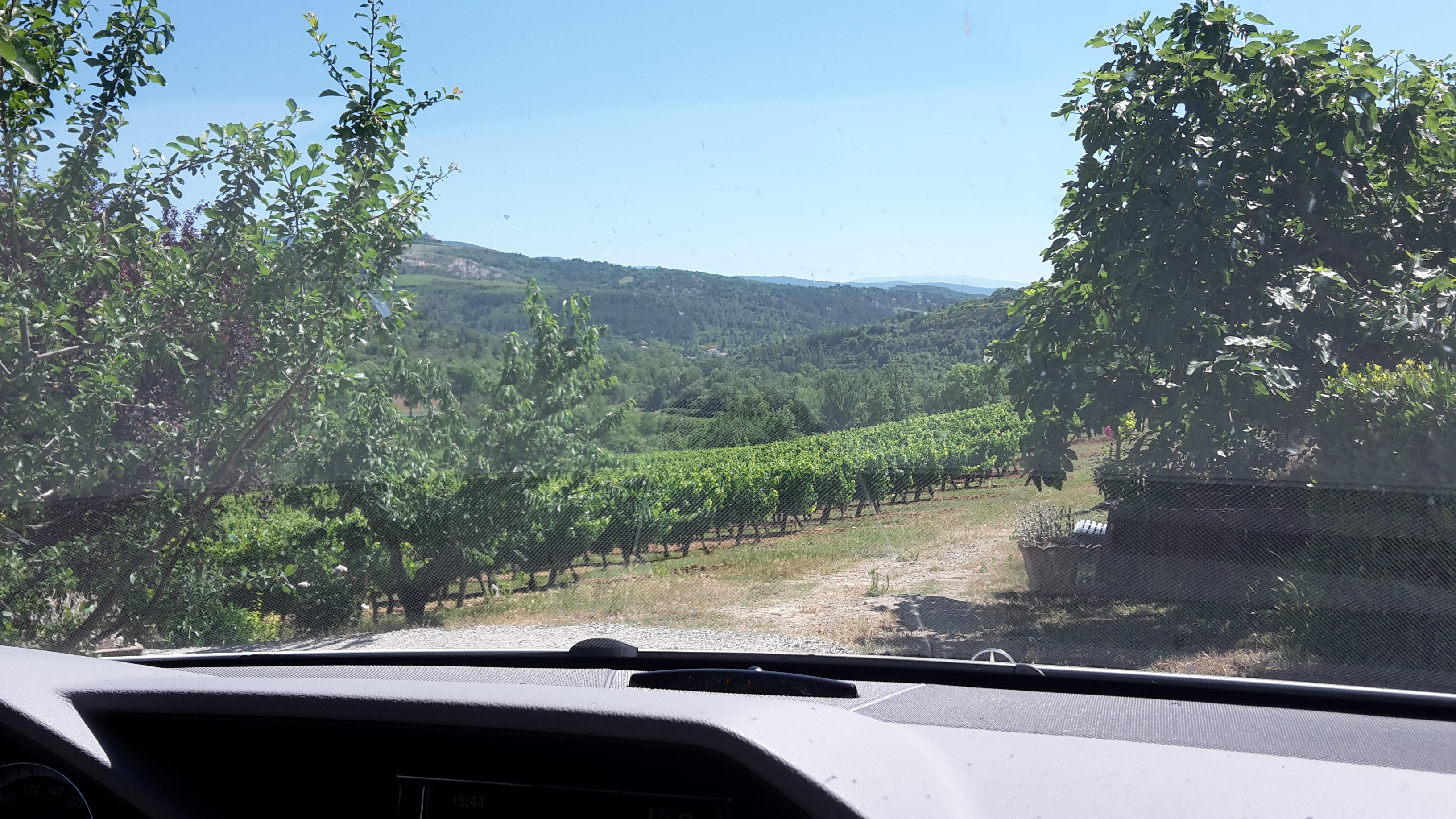

If you’re lucky, you either have a car in Europe already or are visiting someone who does.
For everyone else, renting a car in Europe and having a smooth road-trip will involve some extra planning. But it is worth it for the flexibility that comes with having a vehicle, and trunk space for picking up souvenirs along the way.
Driving in a new place – especially in a foreign country where you may not speak the language – comes with its own set of challenges. Here are some things to keep in mind for a successful road trip in Europe….
Before You Go on a Road Trip in Europe
- Do you have the right documents to drive? In some places your home country license is sufficient. Sometimes you’ll need your regular driver’s license & a passport or identity card. And while it’s only required in some locations, it’s a good idea to invest in an International Driver’s License (IDL) before your trip. In the US, you can get an IDL through AAA up to six months in advance, or through the automobile association in your home country. If you’re planning on renting cars internationally quite often, there is also a 5-year IDL option (this is what I currently have).
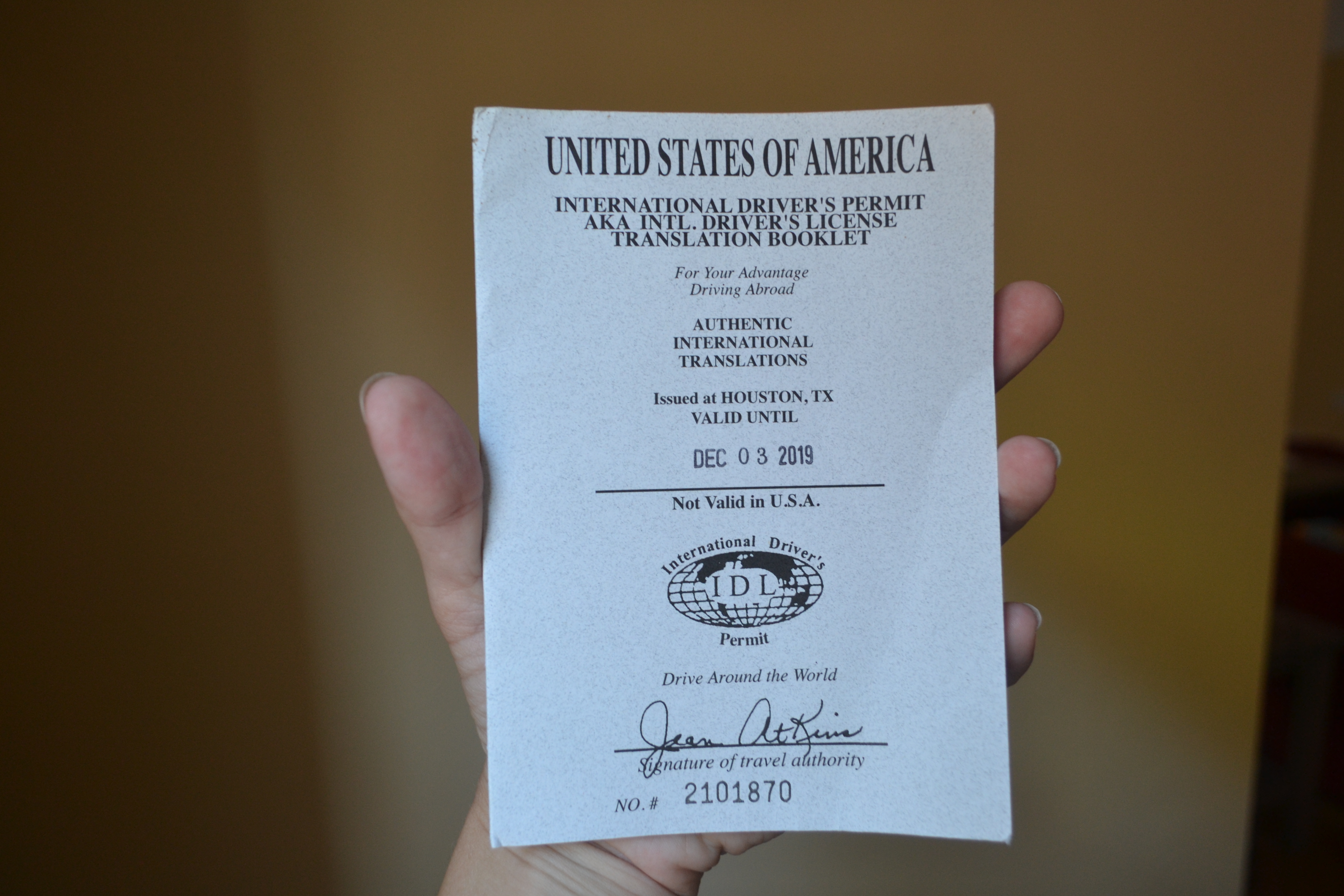
- Are there automatic cars available? Cars with a manual transmission are much more widely available and typically cheaper to rent, so if you drive a manual, you are all set. Otherwise, be sure that there is an automatic that you can guarantee for your the dates of your Europe road trip.
TRAVEL SAVVY TIP! Also do your usual due diligence when renting a car: comparing costs between companies and car type, looking at extra driver and insurance fees, and experimenting with different pickup and drop-off locations to keep costs low.
- Do you have a place to park the car at your destination? Free parking at hotels is more widely available in some European countries than others, and of course the closer you stay to a city center, the less likely you will have parking at your accommodation. Be sure you will have a private lot or public parking garage where you know you’ll be able to leave the vehicle. A road trip in Europe is much more enjoyable when you are not spending half your time circling your destination looking for a parking spot.
TRAVEL SAVVY TIP! Even if your hotel/AirBNB has parking available, sometimes you must reserve a spot in advance. Be sure to reserve parking ahead of time, if necessary.
- Have you checked the driving times between the different stops on your road trip in Europe? No, really. This sounds obvious, but especially in Europe things may be close in kilometers/miles, but take several hours more driving time than you’d expect. Not all destinations are connected by highways and there are a lot of mountain ranges to contend with. I learned this lesson the hard way on a 2007 trip to Croatia and Slovenia, where my friend and I had to forgo an already-paid night in a hostel and take an overnight bus to not lose a day of vacation with the long driving time to our next stop. I usually plug two destinations into Google maps and see the time to arrive by car to plan out a Europe road trip. Please, please, please check driving times in advance!
TRAVEL SAVVY TIP! Depending on where you are traveling in Europe, in some cases your best bet is to road trip for part of the time, and take high-speed trains for part. In many places – especially in Western Europe – high-speed trains can be significantly faster than driving
- How do you plan to navigate? Driving in Europe can be confusing! Signs here do not look like signs you may be familiar with. Sometimes at the split in a road here in Italy, there will be 10 signs on the left with the name of different destinations, and another 10 on the right. But if you don’t know which towns are the way you’re headed, the signs don’t help at all. I definitely recommend some type of navigation system for European driving – many rental companies offer the option of GPS at an additional cost, or if you are planning to get a data plan for your smart phone, you can navigate that way. Just be sure to have a plan in advance.
- How crazy are the drivers where you’re going? Driving in Europe may involve many more vehicle types than you usually see on the road. In Milan and around Italy, I regularly have to maneuver between cars, trucks, buses, trams, bicycles, motorbikes and even tractors sometimes. And the crazier the drivers, the harder this becomes. I feel comfortable driving in Italy (which many expats here do not), although I wouldn’t drive in the city of Naples, notorious for its bad traffic that I’ve also witnessed as a pedestrian. Do a bit of research on where you’re going and what the driving is like there so you can be a prepared driver.
During Your Road Trip in Europe
- What are the default speed limits in the countries you’ll be visiting? European countries each have their own set of default speed limits for different types of roads (residential/state road/highway). There is usually a single sign when you cross a border listing these numbers, and sometimes it won’t be displayed again. Since the speeds are defaults, they’re often not even posted periodically along the highway. Avoid speeding tickets by being aware – and following – the limits.
- What do the different color signs mean? You would think that with much of Europe operating under open borders (the Schengen area), that the road systems would be aligned by now. But they’re not. In Italy, highways are indicated by green signs and more local roads are signed in blue. But as soon as you drive across the border into France, the colors swap – blue for French highways, green for local roads. Know what to look for wherever you’re driving.
- What kind of toll systems are there where you’re going? Some countries have periodic highway tolls, others have you pick up a ticket that you pay once when you exit the highway system, and others use a single paid window decal called a vignette. For the highway tolls, have enough cash in the local currency to cover these as your credit card from home may not work if it doesn’t have both a chip and a PIN. Sometimes only one type of card works in each country, so try a few before giving up and paying cash.
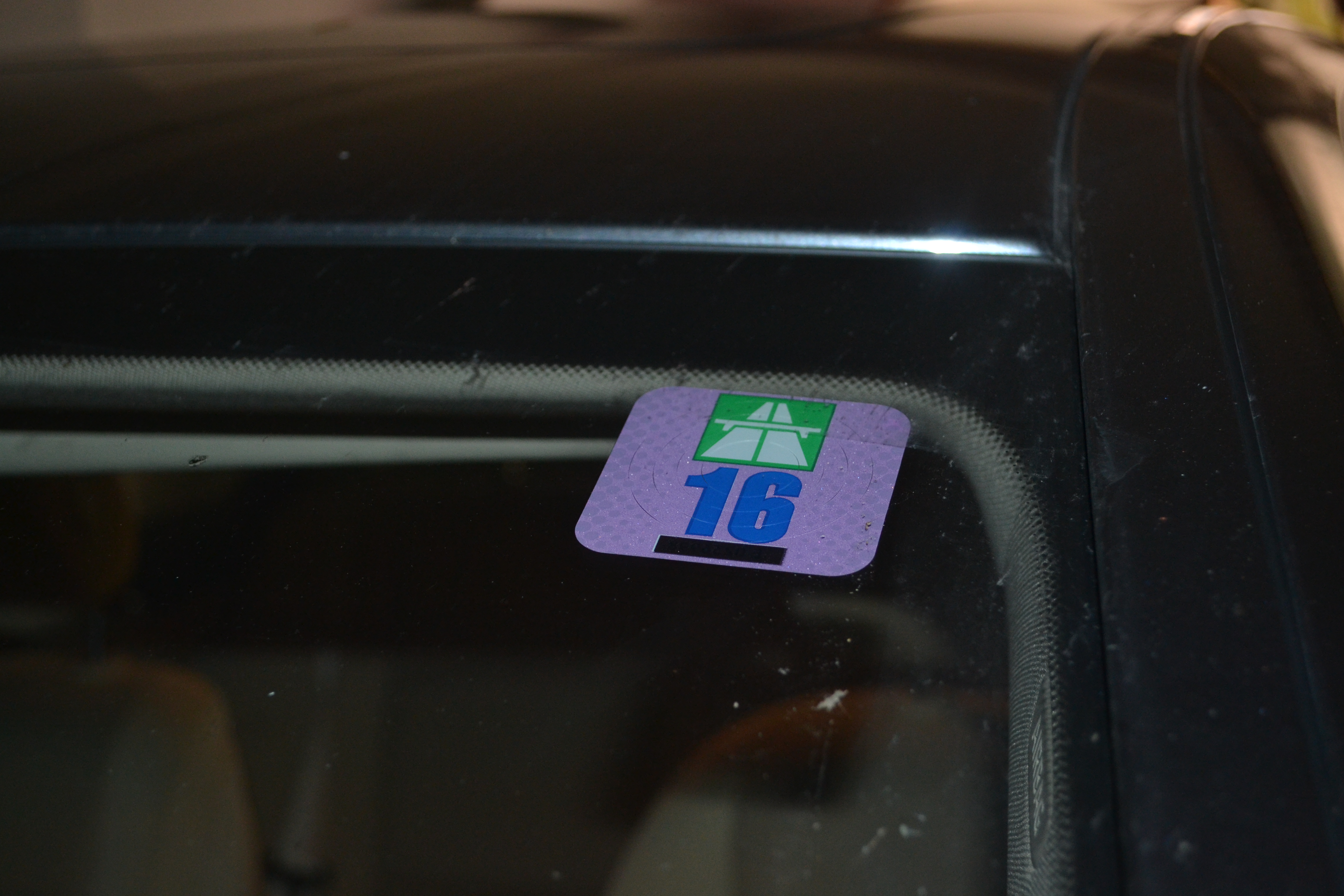
And a vignette is a sticker that you stick on the windshield of your car and covers all of the tolls for the country. Depending on where you rent, the rental car may already have a vignette, otherwise you must purchase one when you enter the country. I most often encounter the vignette for Switzerland, which is 40 Euros or 40 Swiss Francs (CHF) for a calendar year. Austria also has a vignette, which is good for 10 days, or you can get one for several months if you’re planning to stay longer.
- What European road signs should I know? Some basic road signs that are present in Europe may be different from anything you’ve seen before at home. If you have a guidebook, there may be some pictures and explanations in a reference section. The one sign that I had to look up when I first starting driving often in Europe is a diamond-shaped sign with a yellow diamond surrounded by a white border. Normally in Europe at an unregulated intersection, the car to the right has priority. If you are travelling on a large enough road that you have the right-of-way, you’ll know this by seeing the yellow diamond sign, and you no longer have to yield to cars to your right on side streets.
READ MORE: What You Need to Know About Driving on the Autobahn
- Do you know your country abbreviations? When you are driving close to the border with other countries, the list of upcoming cities with their distance away may have a white circle with 1- or 2-letter country abbreviations if the destination is in another country, which are helpful to know as you navigate. Some of these are obvious: for example, A is Austria and B is Belgium, but what about CH? Some European abbreviations are based on the country’s name in the local language, so study up. Like CH (Confoederatio Helvetica) for Switzerland and D (Deutschland) for Germany. Check out the full listing of country abbreviations here.
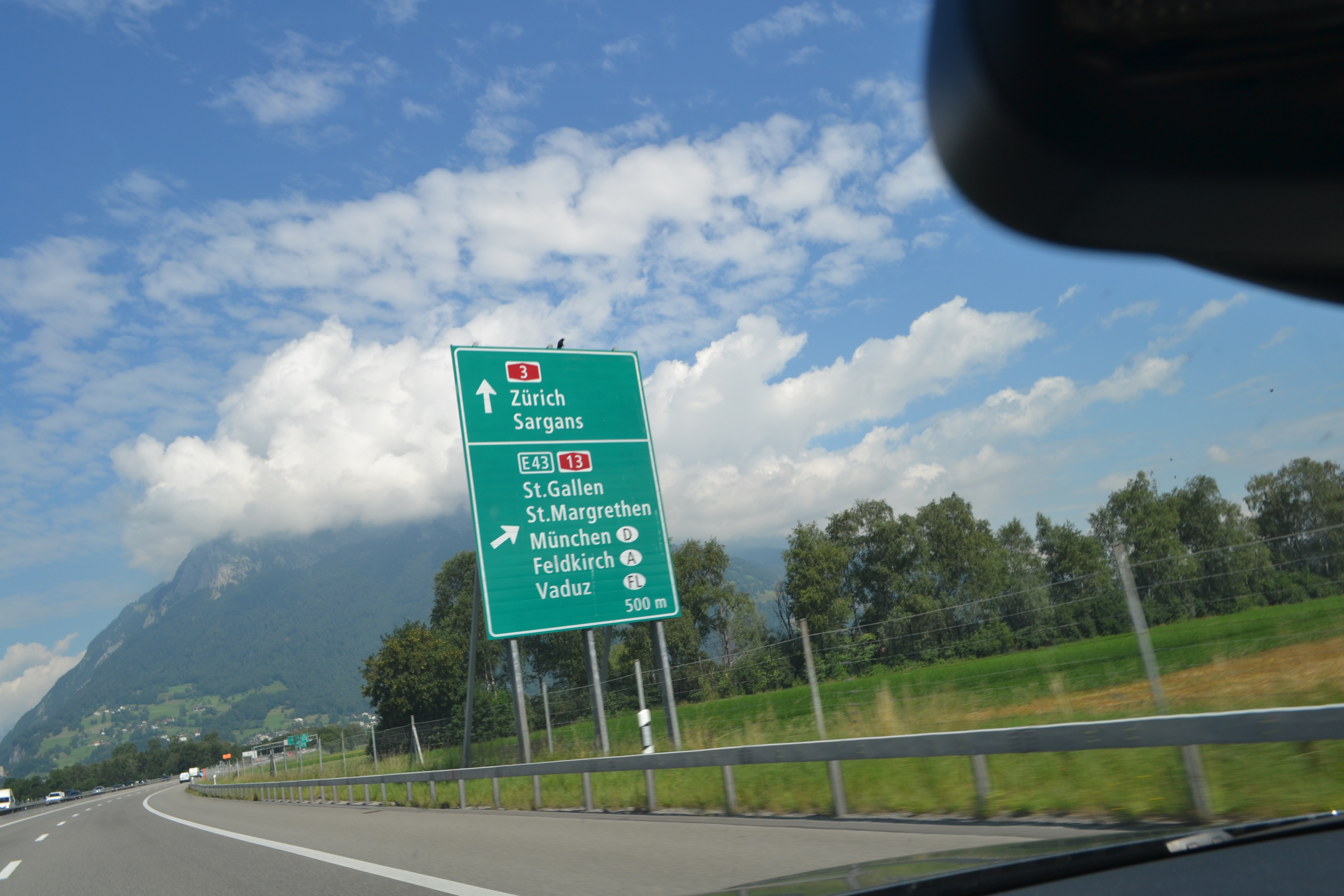
- Which side of the car has the gas/petrol tank & what type should you get? Some cars have a little arrow next to gas gauge, but it’s always a good idea to check ahead of time where the petrol tank is located. Also know whether the car takes diesel or regular gasoline so you can fill up with the correct product.
- Are you ready for European traffic jams? If you’re a seasoned driver, you’ve probably suffered through a traffic jam or two (or a hundred). However, traffic backups can have a very different character in Europe. Sometimes there is a road that it is a single lane in each direction with no passing allowed, so if there is a slow vehicle up ahead, you can just be moving slowly for an extended time.
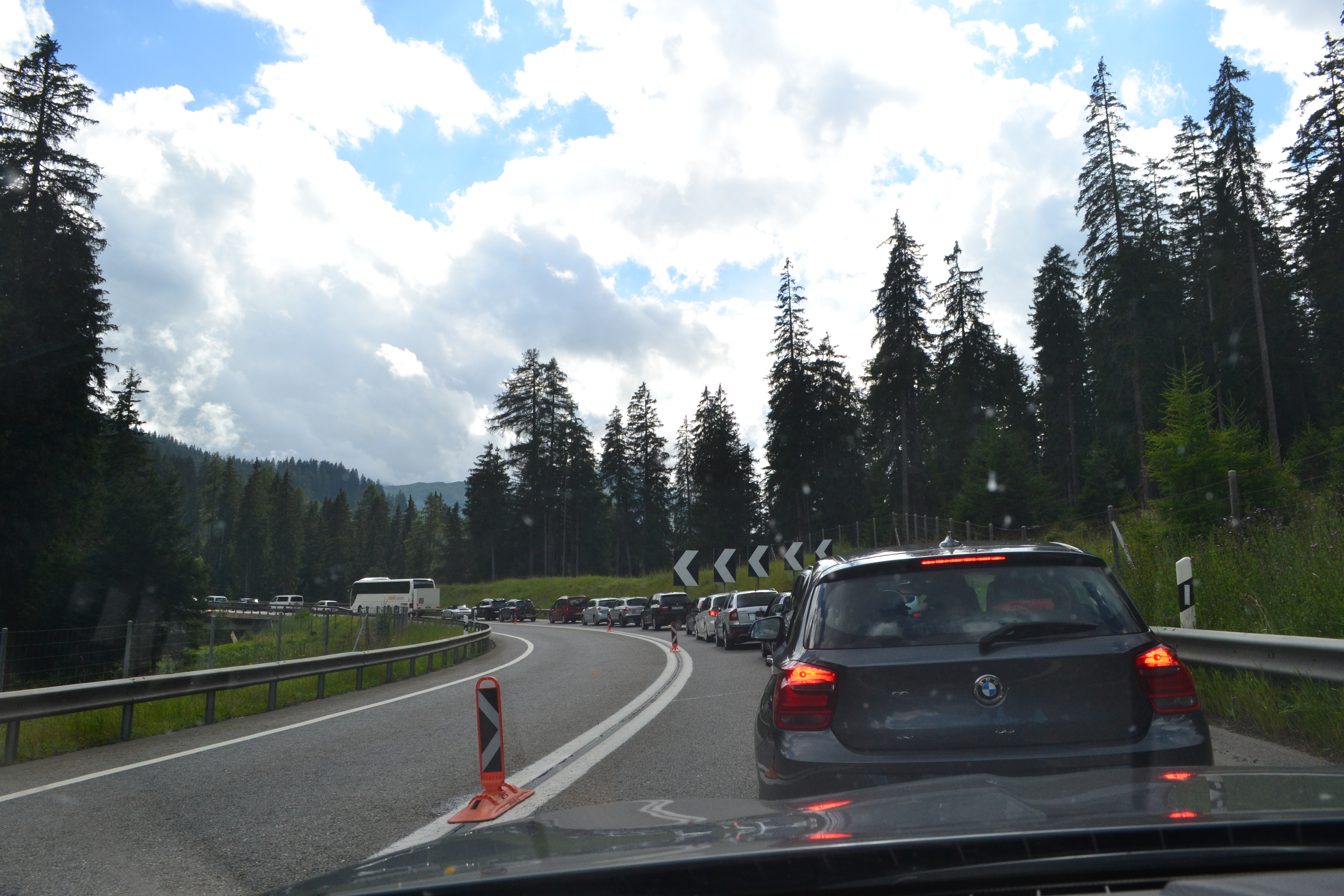
But when there is an accident in my experience, traffic comes to a complete standstill, often for 1 hour or more. As in: the car is in park with the parking brake engaged, and if the weather is nice many people will be outside of their cars smoking or taking a stroll. (Inevitably these kind of traffic jams happen when there is no detour route, but if there is an option to drive around the backup, take it! Another argument in favor of having GPS available.) I’ve been stuck in traffic jams where all movement stops completely in Italy a few times, but also in Switzerland and Germany. Don’t be alarmed if this happens, but do be prepared to wait it out. And if you’re outside of your car during the standstill, don’t worry — everyone magically knows when the traffic will start moving again, no matter how far back you are.
- Did you leave extra time for each of your driving sections? Even with the best preparation – and traffic aside – you still may get lost or take a wrong turn at some point. And missing one turn-off sometimes means going 20 km out of your way to the first point you can circle back, and another 20 km to get back to your starting point before continuing on the correct route (true story, this happened once driving in France). Or hopefully you’ll see something in the distance that catches your eye or see a sign for a local attraction, and will be able to take the time to veer off course and follow your nose to an adventure.
Wow, that’s a lot of things to think about!
Taking a Europe road trip that covers multiple countries is especially exciting for me since there are open borders in so many places. In fact, other than in Switzerland where they check your vignette when you enter and exit, and for some of the micro-nations not part of the Schengen area, you may not even realize you’re crossing an international border.
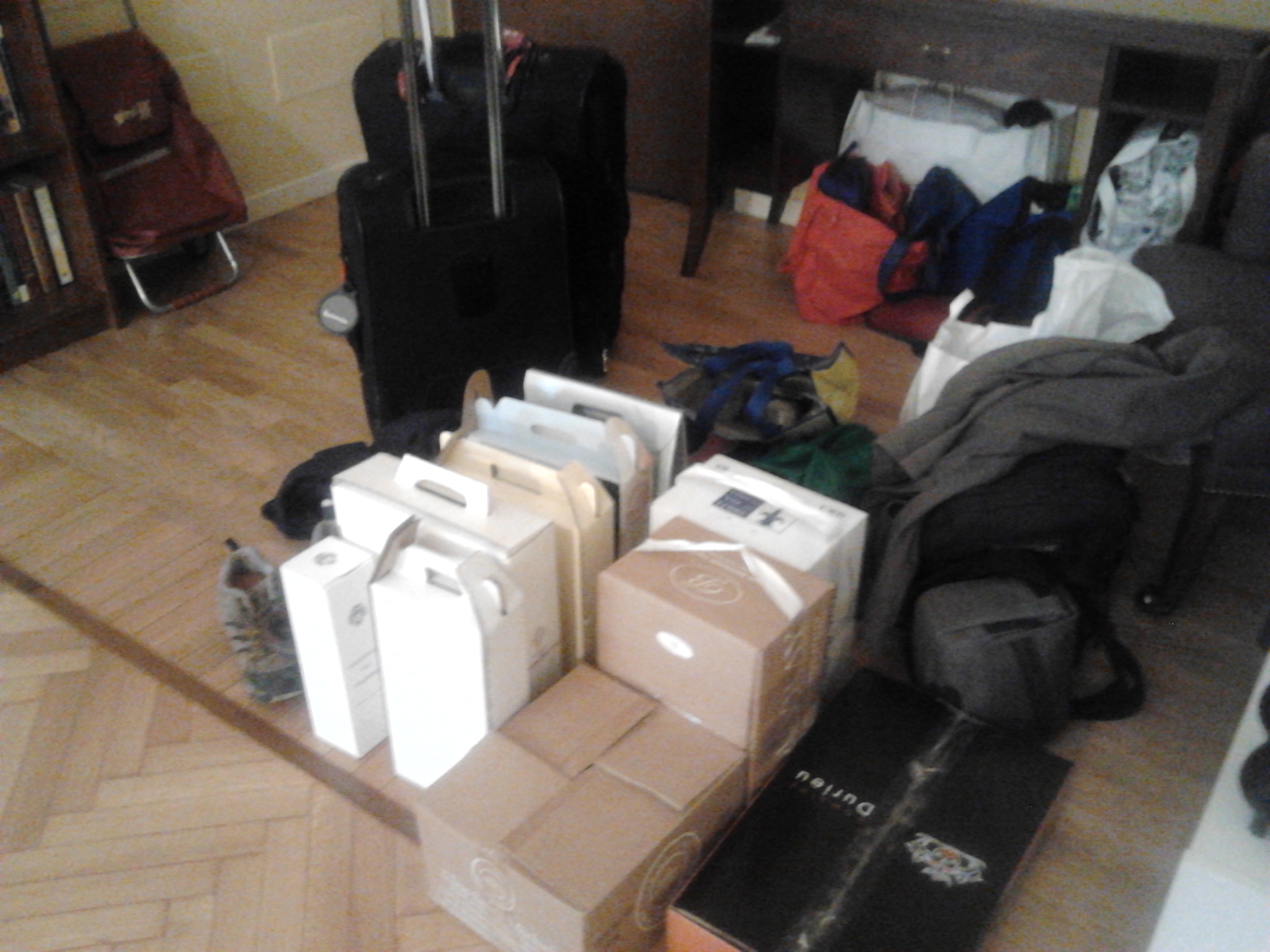
Overall, a road trip in Europe is hugely scenic and rewarding, although as you’ve read there are quite a few things you can do to prepare so you have a smooth driving experience and focus on enjoying the ride.
Have you ever taken a road trip in Europe? What was your favorite part of the experience? And what else did you wish you knew or had researched beforehand?
Want to have these tips accessible for your road trip in Europe? ‘Pin it’ to save for later.
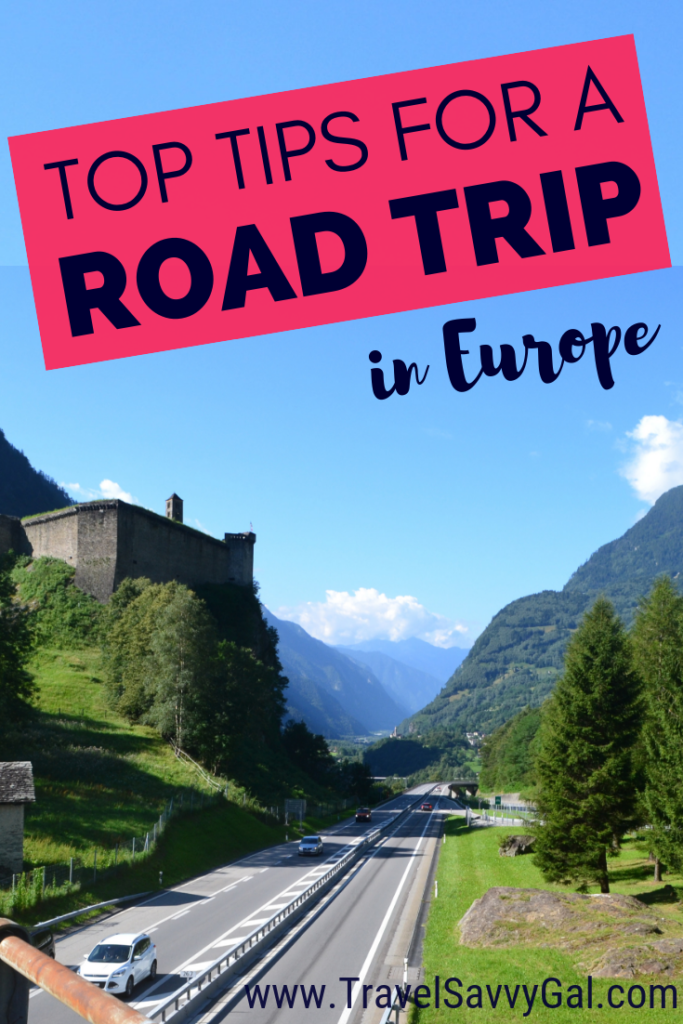
2 thoughts on “Tips for Taking a Road Trip in Europe”
Excellent. Your tips, though on the surface may appear basic, are things people would easily overlook or miss. So thoughtful of you to write them all down. Very helpful, thank you.
Thanks, Shobana, I’m glad you found this post useful. Happy road tripping!